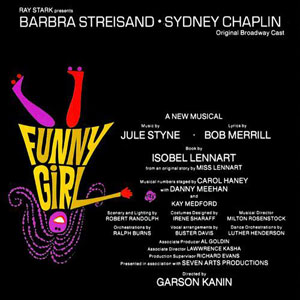
Funny Girl is a musical with score by Jule Styne, lyrics by Bob Merrill, and book by Isobel Lennart, that first opened on Broadway in 1964. The semi-biographical plot is based on the life and career of comedian and Broadway star Fanny Brice, featuring her stormy relationship with entrepreneur and gambler Nicky Arnstein.

Dame Agnes Sybil Thorndike, Lady Casson, was an English actress whose stage career lasted from 1904 to 1969.
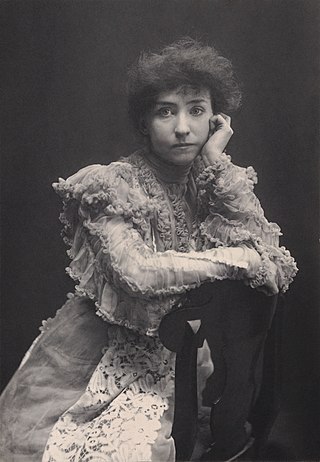
Minnie Maddern Fiske, but often billed simply as Mrs. Fiske, was one of the leading American actresses of the late 19th and early 20th century. She also spearheaded the fight against the Theatrical Syndicate for the sake of artistic freedom. She was widely considered the most important actress on the American stage in the first quarter of the 20th century. Her performances in several Henrik Ibsen plays helped introduced American audiences to the Norwegian playwright.

Otis Skinner was an American stage actor active during the late nineteenth and early twentieth centuries.

Frances Charlotte Greenwood was an American actress and dancer. Born in Philadelphia, Greenwood started in vaudeville, and starred on Broadway, movies and radio. Standing almost six feet tall, she was best known for her long legs and high kicks. She earned the unique praise of being, in her words, the "...only woman in the world who could kick a giraffe in the eye."

Gertrude Bryan was an American stage actress who appeared on Broadway in the early 20th century.

Emily Stevens was a stage and screen actress in Broadway plays in the first three decades of the 20th century and later in silent films.
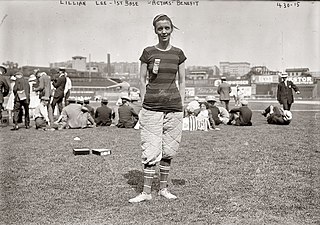
Lillian Lee was a stage actress in New York City beginning in the early 1880s. She was in the cast of the original Ziegfeld Follies in 1907.
Kimilee Karyn Bryant is an American actress, singer and former Miss South Carolina. Bryant is best known for playing the role of Christine Daaé in the Broadway and other productions of The Phantom of the Opera, and later the role of Carlotta in the same musical. She has sung at Lincoln Center's Avery Fisher Hall and played many roles in U.S. regional theatres and opera, including at New York City Center with the New York Gilbert and Sullivan Players. She has also performed in cabaret, film and television.

Minnie Gertrude Ellis Jeffreys was an English actress, best known for her comedy roles.

Charles Morton Stewart McLellan (1865–1916) was a London-based American playwright and composer who often wrote under the pseudonym Hugh Morton. McLellan is probably best remembered for the musical The Belle of New York and drama Leah Kleschna.

Leah Kleschna is a drama in five acts by C.M.S. McLellan produced for the first time on Broadway by Minnie Maddern Fiske, Harrison Grey Fiske and the Manhattan Company with set design provided by Frank E. Gates and E. A. Morange.
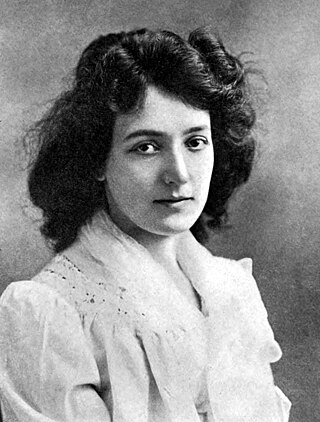
Clara Lipman was an American musical comedy actress and playwright whose career began in 1885 and continued on until her retirement in 1927. She was the wife of comedian Louis Mann and the sister of popular Lieder singer, Mattie Lipman Marum.
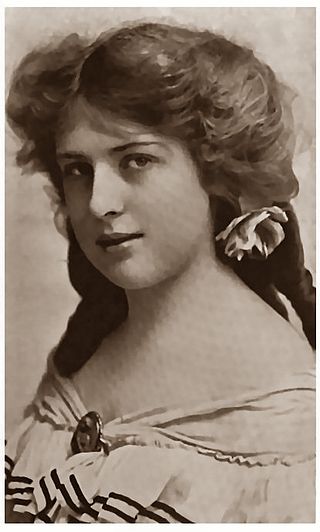
Edna McClure was an American actress whose brief career on Broadway was overshadowed by a sensational murder case and later a tragic family dispute.

Jane Peyton was an American lead and supporting actress whose career did not commence until she was nearly 30. During her time on stage, she appeared in several long-running Broadway plays and successful road tours. Peyton is remembered for her performances in The Ninety and Nine, The Earl of Pawtucket, The Heir to the Hoorah, The Three of Us, and The Woman. Once the wife of actor Guy Bates Post, Peyton retired after 14 years on stage, when she married the writer Samuel Hopkins Adams.
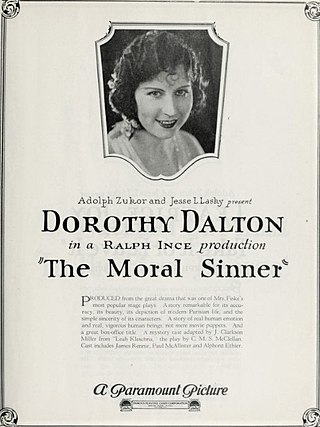
The Moral Sinner is a 1924 American silent drama film directed by Ralph Ince and written by Willis Goldbeck, Josephine Quirk, and Rita Weiman, based on the 1904 play Leah Kleschna by C. M. S. McLellan. The film stars Dorothy Dalton, James Rennie, Alphonse Ethier, Frederick Lewis, Walter Percival, and Paul McAllister. The film was released on May 19, 1924, by Paramount Pictures.
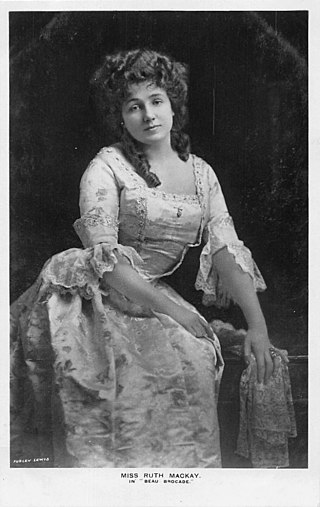
Ruth Mackay was a British stage and silent film actress. She was married to actor Eille Norwood.
Leah Kleschna is a lost 1913 American silent film directed by J. Searle Dawley and starring Carlotta Nillson, a Swedish stage actress. It was produced by Daniel Frohman and Adolph Zukor under the banner of his newly formed Famous Players Film Company. The film is based on a 1904 play Leah Kleschna by C. M. S. McLellan that starred Mrs. Fiske on Broadway.

Minna Gale, also credited as Minna K. Gale and Minna Gale Haynes, was an American actress.

Florence Isabella Brandon, known by her stage name Florence West, was an English actress, who created roles in new plays by Oscar Wilde and Bernard Shaw. She married the actor Lewis Waller and frequently appeared with him in the West End and on tour until her retirement in 1905.



















